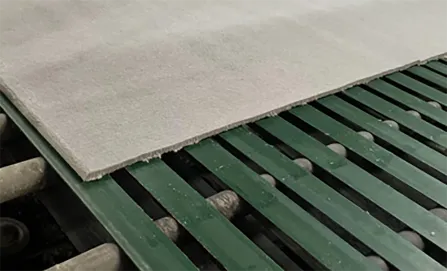Nov . 11, 2024 02:55 Back to list
Comparing Mineral Fiber Ceiling Panels to Gypsum Board for Building Applications
Mineral Fibre Board Ceiling vs. Gypsum Board A Comparative Analysis
When it comes to choosing the right ceiling material for commercial and residential projects, construction professionals often face a crucial decision mineral fibre board ceilings or gypsum board. Each option has its unique set of characteristics, advantages, and potential downsides. In this article, we will explore both materials to help you understand their applications, benefits, and limitations.
Overview of Materials
Mineral Fibre Board Ceiling Mineral fibre boards, often made from a mixture of natural and synthetic fibers, are commonly used in suspended ceiling systems. These boards are lightweight, easy to install, and provide excellent sound absorption properties. Additionally, they are resistant to moisture and can be treated to be fire-resistant.
Gypsum Board Gypsum board, also known as drywall or plasterboard, consists of a layer of gypsum sandwiched between two sheets of heavy paper. Gypsum boards are widely used for interior walls and ceilings due to their ease of installation and finishing. They provide a smooth surface that can be painted or textured, offering aesthetic versatility.
Key Comparisons
1. Acoustics and Soundproofing One of the significant advantages of mineral fibre board ceilings is their superior acoustic performance. They are designed specifically for sound absorption, making them ideal for spaces where noise reduction is a priority, such as offices, concert halls, and schools. Gypsum boards, while providing some degree of soundproofing, do not perform as effectively in high-noise environments unless utilized with additional soundproofing measures.
mineral fibre board ceiling vs gypsum board

2. Fire Resistance Both materials are known for their fire-resistant properties, but gypsum board has an edge in this category. Gypsum naturally contains water molecules in its composition, which helps to slow down the spread of fire and provides longer-term protection. Mineral fibre boards can also be treated for fire resistance, but their performance may vary based on the specific product and manufacturer.
3. Aesthetics and Surface Finish When it comes to aesthetics, gypsum board offers more flexibility. Its smooth surface allows for various finishes, including paint, wallpaper, or decorative textures. In contrast, mineral fibre boards typically come in standard ceiling tiles, which can offer limited design options. However, they do come in different styles and can mimic traditional ceiling designs, providing some degree of aesthetic appeal.
4. Moisture Resistance Mineral fibre boards are inherently more moisture-resistant compared to gypsum, making them suitable for humid environments such as kitchens and bathrooms. Gypsum boards can be susceptible to moisture damage unless specifically treated with water-resistant coatings. Therefore, for areas prone to dampness, mineral fibre board ceilings are often the more reliable option.
5. Installation and Maintenance Both ceiling types are relatively easy to install. However, mineral fibre board ceilings are generally lighter and can be easier to handle, especially in larger areas. Maintenance is another consideration; mineral fibre boards are easier to clean and can be replaced individually if damaged. Gypsum boards may require more effort to repair, such as patching and repainting, which can be time-consuming.
Conclusion
In summary, the choice between mineral fibre board ceilings and gypsum board largely depends on the specific needs of the project. If sound absorption and moisture resistance are top priorities, mineral fibre board may be the way to go. On the other hand, for projects where aesthetics and fire resistance are paramount, gypsum board offers a versatile solution.
Ultimately, contractors and builders should assess the environment, desired aesthetics, and specific functionality to select the most appropriate ceiling material. By understanding the characteristics and applications of both options, professionals can make informed decisions that lead to successful and sustainable installations.
-
Quality Ceiling Trap Doors & Access Panels | Easy & Secure AccessNewsAug.30,2025
-
Durable Ceiling T Grid Systems | Easy InstallationNewsAug.29,2025
-
PVC Gypsum Ceiling: Durable, Laminated Tiles for Modern SpacesNewsAug.28,2025
-
Pvc Gypsum Ceiling Is DurableNewsAug.21,2025
-
Mineral Fiber Board Is DurableNewsAug.21,2025
-
Ceiling Tile Clip Reusable DesignNewsAug.21,2025







